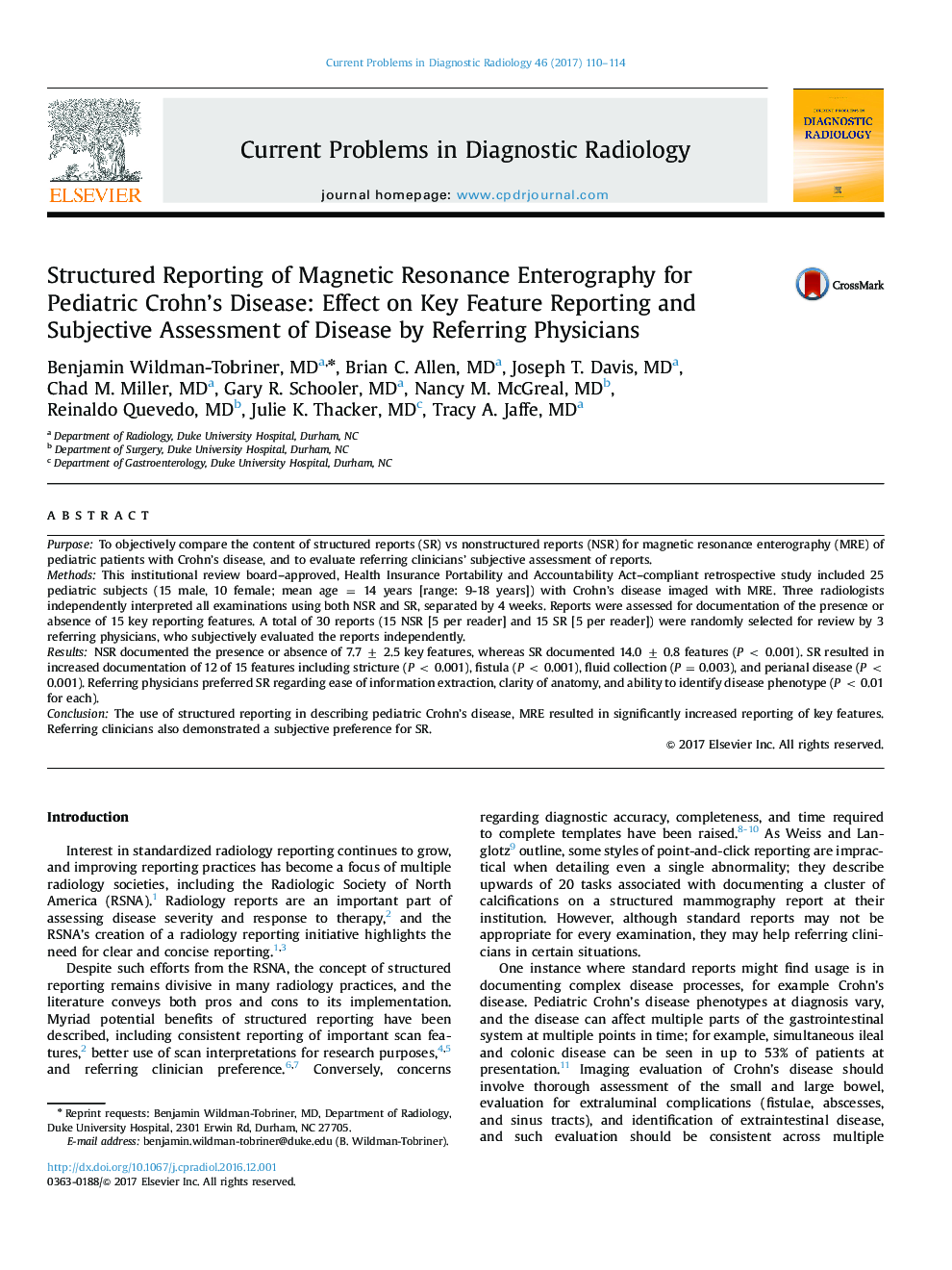| Article ID | Journal | Published Year | Pages | File Type |
|---|---|---|---|---|
| 5725925 | Current Problems in Diagnostic Radiology | 2017 | 5 Pages |
PurposeTo objectively compare the content of structured reports (SR) vs nonstructured reports (NSR) for magnetic resonance enterography (MRE) of pediatric patients with Crohn's disease, and to evaluate referring clinicians' subjective assessment of reports.MethodsThis institutional review board-approved, Health Insurance Portability and Accountability Act-compliant retrospective study included 25 pediatric subjects (15 male, 10 female; mean age = 14 years [range: 9-18 years]) with Crohn's disease imaged with MRE. Three radiologists independently interpreted all examinations using both NSR and SR, separated by 4 weeks. Reports were assessed for documentation of the presence or absence of 15 key reporting features. A total of 30 reports (15 NSR [5 per reader] and 15 SR [5 per reader]) were randomly selected for review by 3 referring physicians, who subjectively evaluated the reports independently.ResultsNSR documented the presence or absence of 7.7 ± 2.5 key features, whereas SR documented 14.0 ± 0.8 features (P < 0.001). SR resulted in increased documentation of 12 of 15 features including stricture (P < 0.001), fistula (P < 0.001), fluid collection (P = 0.003), and perianal disease (P < 0.001). Referring physicians preferred SR regarding ease of information extraction, clarity of anatomy, and ability to identify disease phenotype (P < 0.01 for each).ConclusionThe use of structured reporting in describing pediatric Crohn's disease, MRE resulted in significantly increased reporting of key features. Referring clinicians also demonstrated a subjective preference for SR.
